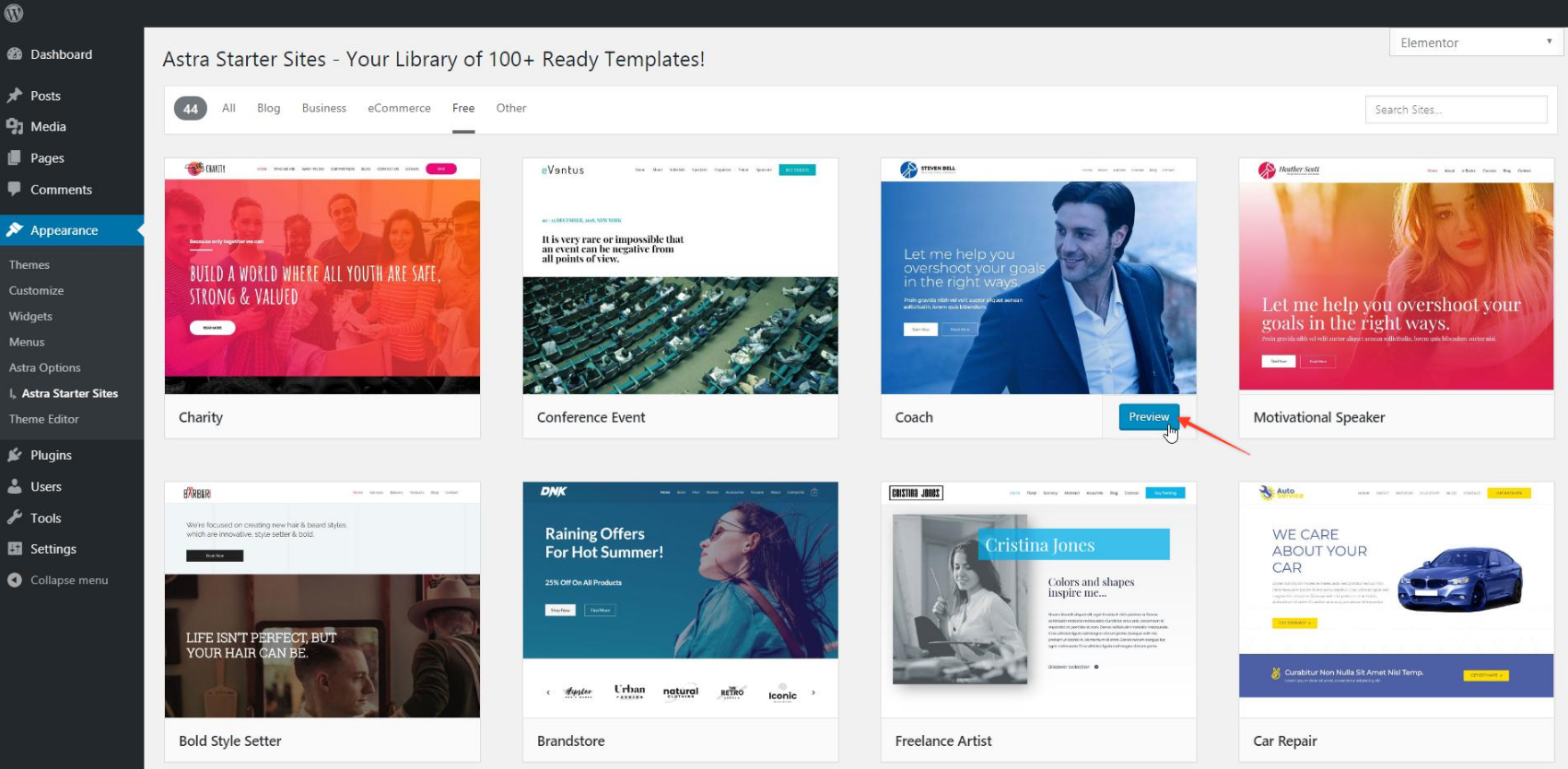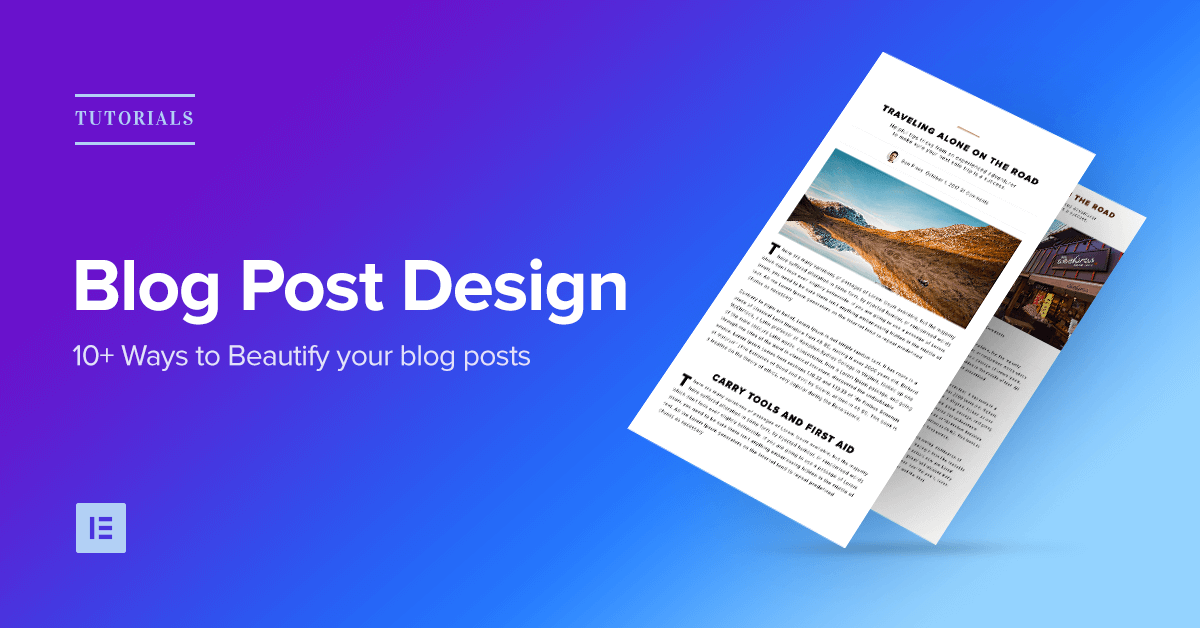Blog Designer for Elementor is a good handy and free solution for everybody who is trying to design/create a responsive blog page with the web site. Blog Designer can be used with any kind of WordPress website. Blog Designer provides you 15+ Different Post layout including Grid, Standard and List. Get the latest news and updates about the Elementor website builder for WordPress, plus tutorials and other interesting posts about web design and WordPress. Elementor themes are simply WordPress themes that supports different page builders. Here is the list of best elementor themes. Blog Magazine is one of the best elementor compatible WordPress themes. Music is a form of art that involves organized and audible sounds and silence. It is normally expressed in terms of pitch (which includes melody and harmony), rhythm (which includes tempo and meter), and the quality of sound (which includes timbre, articulation, dynamics, and texture).
Description
Live Demo | Support
BlogLentor is a user-friendly Elementor based addon plugin for creating beautiful blog posts, post listing, post slider and post carousel within a few seconds.

Every setting is visually editable in BlogLentor. You’ll be able to change your design of the post with style settings. If you do not have enough design skills, don’t fret, many creative designs and layouts are ready for your needs.

Skin & Layout
BlogLentor is built on a skin and layout based, you can customize layout elements and change skin. BlogLentor has more than 10 creative skin and layout, so if you have zero programming knowledge so you’ll be able to easily customize the layout and apply your own style.
Responsive Design
BlogLentor is pixel perfect responsive and it works fluently on any device. You’ll easily select a column number from the overall setting which you would like. BlogLentor consists of a mixture of flexible grids and layouts, images, and intelligent use of CSS.
Taxonomy & Terms
BlogLentor provided the foremost important feature is custom taxonomy and terms, you can select multiple taxonomies and terms for query posts.
Slider & Carousel Skin
Elementor Blog Page
Slider and Carousel using posts are easier to make using BlogLentor. You can easily create your desired design and apply it to the advanced query. BlogLentor slider and carousel design with more user-friendly control over the modern design.
Query Settings
- Post Types [post/page/media/…..]
- Categories [Your post category]
- Tags [Your post tag]
- Formats [Post format]
- Post per page [Number of post/pages/…… you want to show]
- Offset [Choose the number of posts to pass over or skip]
- Order By [Post ID, Author, Title, Published date, Modified date, By parent, Random order, Comment count, Menu order]
- Order [Order by Descending or Ascending]
Pagination
BlogLentor has 2 types of pagination support, like numbers and numbers with next/previous. You can change very quickly and design from a style setting.
Post Grid
Skin-based post grid widget included five plus different layouts in the free version. It is fully able to change the visual query builder. You will get lots of options in the widget panel. The most attractive sections are skin and layout for different skins. You will get the header section for every design with filtering. Also, you can manage your ‘Read More’ text and advanced pagination options as well as manage taxonomies and terms and excerpts.
Post List
Skin based post list widget included two different layouts. It is able to change the visual query builder option and you can select columns. Easily able to change image size, height, and width. You can choose multiple meta options with different meta styles and manage taxonomies & terms and excerpts. You can manage your ‘Read More’ text and advanced pagination options. Also, You will get header section with filtering.
News Ticker
News ticker widget helps you display your latest news/posts in slide or fade format. BlogLentor presents two different layouts that you will control all number of posts to display and unlimited news tickers. Users can pause news tickers on mouse hover so you can read or open the news post and also show/hide the initial label for your news ticker that adds a creative look. You can select whether the news ticker link opens in a new tab or not.
Post Taxonomy
Post taxonomy widget helps you display your taxonomy list, like categories and tags. You can show your taxonomy from any custom post type selection. You will get two different skin in the free version. It helps you show your taxonomy list very easily and every style control will be customizable. If you want to get a header for your taxonomies, you can manage from the header option.
More Quality Features
- Fully Responsive
- Cross Browsers Support (Firefox, Chrome, Safari, Opera, etc.)
- Manage a number of posts per page
- Multiple Post Category and Tags Selection.
- Maintain post content length.
- Manage image size with image link and new tab selection.
- Title show/hide, title link with a new tab, title Html tags.
- Multiple meta selection with separator.
- Taxonomy show/hide.
- Excerpt show/hide with length.
- Manage your ‘Read More’ text
- Custom CSS support
What can you make using this plugin?
- News Blog
- Magazine Blog
- Personal Blog
- Blog Post Grid
- Blog Post Listing
- Post Slider
- Post Carousel
Installation
How to install the plugin?.
Install From WordPress Admin Panel:
Step 1. Login to your WordPress Admin Area
Step 2. Go to Plugins -> Add New
Step 3. Type “BlogLentor” or “BlogLentor for Elementor” into the Search and Enter.
Step 4. Find this plugin Click “install now”
Step 5. Activate the plugin
Step 6. Use BlogLentor on your blog design.
Manual Installation:
Step 1. Download the plugin from the WordPress.org repository
Step 2. On your WordPress dashboard and go to the ‘Plugins -> Add New -> Upload Plugin’
Step 3. Upload the downloaded plugin file (bloglentor.zip) and click ‘Install Now’
Step 4. Activate ‘BlogLentor’ from your Plugins page.
Step 5. Use BlogLentor on your blog design.
Elementor Blog Themes
FAQ
Is it necessary to install Elementor Page Builder to use BlogLentor?
Yes, BlogLentor has been based on Elementor page builder.
Is BlogLentor free?

Yes, it’s totally free of charge.
Is BlogLentor fully responsive?
Yes, all skins are built with pixel perfect responsive design and it will work fine in all kinds of devices.
Can I use BlogLentor with any theme?
Yes, you can use BlogLentor with any theme. If you face any problem using BlogLentor, you may contact us.
Does BlogLentor give me total control of my blog page?
Yes, BlogLentor gives you total control of your blog page. You need to just set up everything correctly and enjoy it.
Does BlogLentor give me full control of styling my blog layout?
Yes, it gives you full control of styling blog layouts.
Reviews
Ever wanted to fully customize the layout of your blog posts?
Now Elementor Pro 2.0 features a blog post templating system you can use to easily and quickly build your own.
In the video below I walk you through all the steps and show you exactly how you can do it.
Below the video is some brief steps and outlines in case you want the quick version.
How To Create An Elementor Blog Template
There are a few ways you can go once you have the plugin,

- Use a pre-built Elementor template
- Customize an Elementor blog template
- Build your own from scratch
Personally, I recommend you use their templates as a starting point and then go from there. It is a lot faster to work that way, and you will create the blog post layout you want in far less time.
1. The first step to creating a new template is to go to the Elementor > My Templates
2. Now, Elementor will show you a new templates page where you can create your new Blog Post Template:
Create New Template
3. Choose a Template Type and then name your template
Elementor Blog Post
4. Choose a pre-built template or simply create your own (close that window). I recommend using one of the pre-built ones as a starting point:
Once the template is loaded, it is exactly like anything else in Elementor. You can add, change or remove Elementor Widgets.
Check Out Elementor Pro 2.0 Here
New Blog Post Widgets
The only big difference is that the templates they use have widgets you will need to display the blog post content. You can see some of them in the image below. So, if you don’t use a template, you can add them manually.
The main ones you will need are the
- Post Title
- Post Content
- Featured Image
But, there are also things like comments, Facebook comments and post excerpts in case you need them.
New Blog Post Properties
Another thing to be aware of is the new blog post properties you can use within normal Elementor Widgets.
Say, for example, you wanted to create your own custom title for the blog post. You can use a standard Elementor Heading and then simply tell Elementor to use the Blog Post Title in that heading. That way, it is always using the current posts heading. Otherwise, you will just have your normal heading (and words) in every post, which is probably not what you want.
Here is an example of how to get to that property in a standard heading. Simply click on Dynamic (very small) word above the text area in the heading widget:
Then, you will get a list of WordPress properties (like blog post title etc) that you can use to put in the Text area automatically:
Publishing & Display Conditions For Templates
Once you are done with your template, you can decide (almost) exactly where it will be used. It depends on the type of template of course, but in this case we are focused on blog templates.
So, you press Publish and then choose from the list of “conditions”. If you are creating a single blog post template, you can pick All Posts.

If you plan on having different kinds of content, you can either create a template per format or per category, depending on how you have divided things up.
And voila! Your blog posts will now appear exactly as you have designed them.
My only other recommendation is to now tweak it on a live blog post as the preview mode for blog posts is now as robust as a real life post to check with.
Check Out Elementor Pro 2.0 Here
